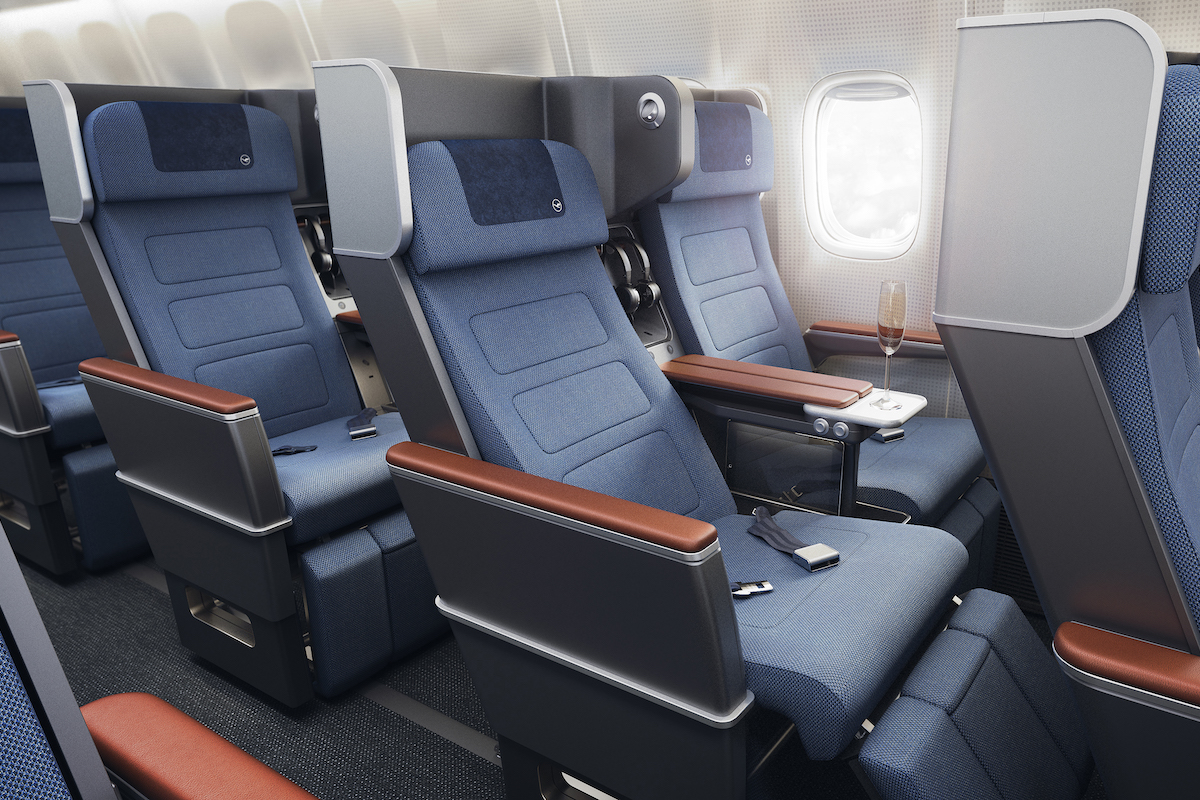Lufthansa, American Among Airlines Investing Billions in Lucrative Premium Seats

Photo Credit: Lufthansa
They say the best time to invest is at the bottom of the cycle. Well, airlines may have missed the bottom, but with balance sheets looking solid again they are moving quickly to update their products as travelers eagerly return to the skies.
Lufthansa unveiled Friday a new suite of premium seat offerings, labeled "Allegris," as part of a €2.5 billion ($2.4 billion) investment in onboard products through 2025. Allegris includes new first class and business class suites; new premium economy seats; and upgraded economy seats. The product will be introduced next year on Lufthansa's new Airbus A350s and Boeing 787s, and be installed on more than 100 other aircraft, including new Boeing 777-9s as well as Boeing 747-8s already in its fleet. Airbus A380s that Lufthansa is temporarily reactivating to meet demand will not receive the new seats.
And in September, American Airlines unveiled new business class suites, and premium economy seats for its long-haul fleet. The products will be introduced in 2024 on new Airbus A321XLR and 787-9 aircraft, and later installed on 777s and 787s in the carrier's fleet. American will remove the first class cabin on its 777s and premium A321 aircraft as part of the retrofits.
Skift identified the rise of premium leisure travel as a 2022 travel megatrend.
The moves by Lufthansa and American — just two of many airlines, including Air France, Emirates, Finnair, and KLM — come amid a shift in leisure travel patterns towards more premium products. Numerous carriers cited premium leisure as a growing travel category during the pandemic, and have invested in capturing more of these travelers. Delta Air Lines, for example, accelerated the installation of premium economy seats and business class suites on its wide-body fleet during the Covid crisis in response to this shift.
During Atlanta-based Delta's third-quarter earnings call on October 13, President Glen Hauenstein said revenues from premium seats grew 10 percent faster than those from economy seats. And, in reference to premium leisure travelers, he said roughly 70 percent of those who bought up to a premium seat once will do so again on a future Delta flight.
Premium economy seats, which Delta is moving to install on all of its widebody aircraft, are widely viewed as among the most profitable for airlines. The seats are sold as a product that sits between economy — even extra-legroom economy — and business class. And to the point of the seats being money makers for airlines, KLM, in its roll out of a premium economy cabin on 777 and 787 aircraft in September, is shrinking its economy cabins across the board in favor of the new section.
American, with its new business and premium economy seats, will similarly shrink the size of the economy cabin on its 787-9s in favor of more business and premium economy options.
"The trend towards higher priced booking classes continues unchanged, with premium leisure demand, especially originating in the U.S., playing in more and more important role in this regard," Lufthansa Group CEO Carsten Spohr said of what his airline was seeing in August. That strong premium demand was, in part, driving the group's decision to invest in an updated onboard experience, he added.
Travelers can get a first look at Lufthansa's new product on group airline Swiss Air. The Zurich-based carrier introduced the premium economy seats on its 777s in March. Like at American and KLM, Swiss cut the number of economy seats — but not business or first seats — on its aircraft when it added the new cabin.
Few airlines disclose their investments in onboard product. American, for example, declined to comment on the investment it will make in new business and premium economy seats. However, the numbers are significant: Emirates is making a "multi-billion" dollar investment, and Finnair more than €200 million. To put that in perspective, Finnair's entire take in 2021 was only €838 million, which makes the product investment nearly a quarter of its pandemic-hit revenues that year.
